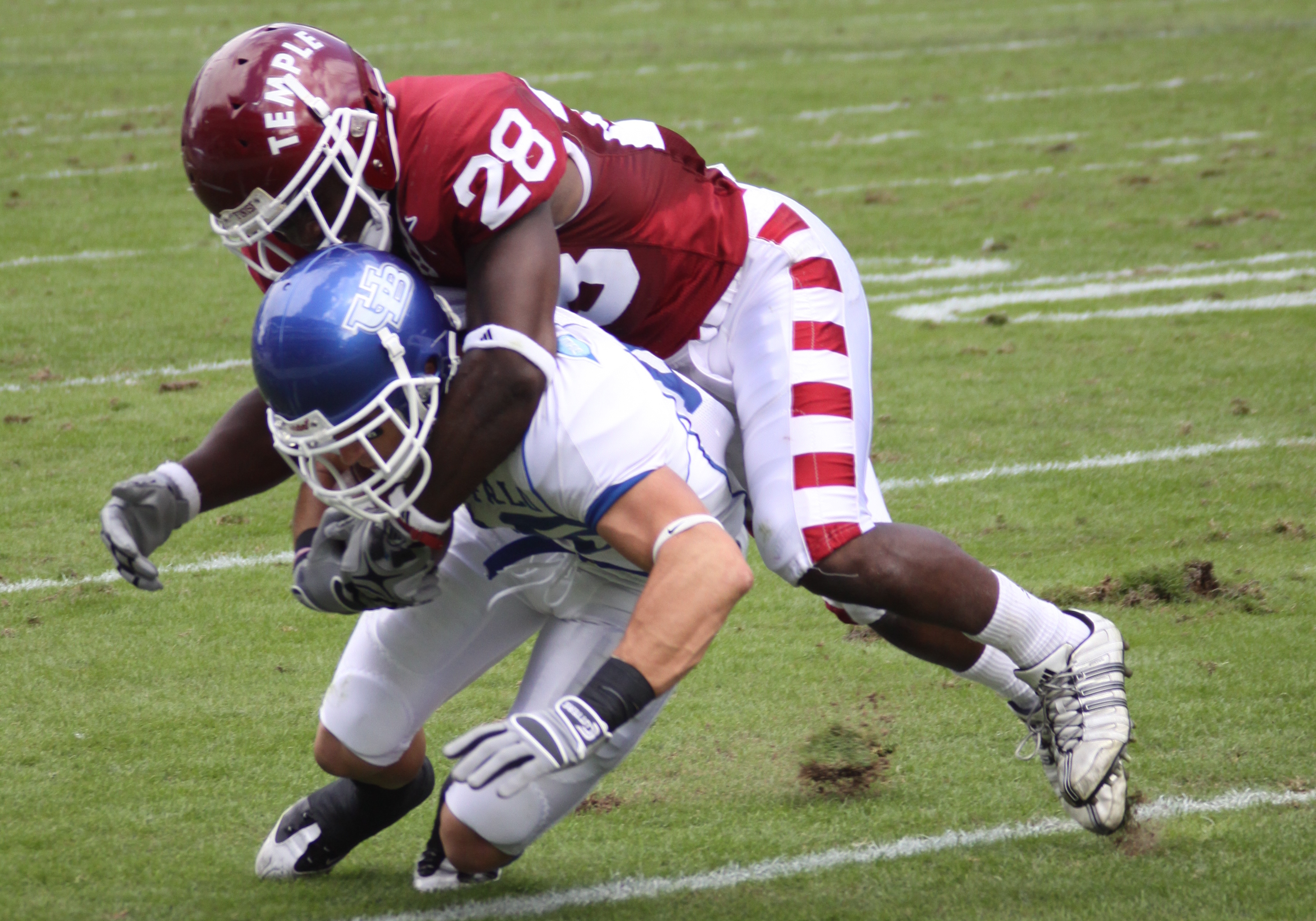The effects of repeat concussion injuries on athletes, particularly American football and rugby players, is one of the biggest concerns in competitive sports today. However, a new Oxford University collaboration suggests that blows to the head can cause lasting trauma - even in the absence of signs of concussion.
The findings suggest that attempts to monitor and prevent concussions in sport, such as new designs for helmets, may be futile, since nothing can change the motion of head movement inflicted by a flying tackle.
Published in the journal Brain, the research identified early signs of the brain disease Chronic Traumatic Encephalopathy (CTE) after head injuries. The signs of the disease not only persisted long after the initial injury, but spread through the brain. The study provides the most conclusive evidence to date that it is repeated head impacts, such as tackles – even mild ones, and not concussion, that causes the disease.
CTE is a neurodegenerative disease triggered by a build-up of the protein tau around small blood cells in the brain. The condition is known to limit cognitive ability and cause brain cell death and dementia. The relationship between CTE and sports-related brain injury is widely known, but exactly which injuries can cause the disease, and whether concussion is one of them, is less clear.
Researchers from the Oxford University Institute of Biomedical Engineering worked in collaboration with 40 international partners on the project. The team, led by Boston University and including the Cleveland Clinic, Harvard Medical School, and Lawrence Livermore National Laboratory, has carried out extensive studies over the past few years, comparing analysis of the brains of human teenagers with recent head injury, against mouse models. This work allowed the team to understand trauma to the brain both from military-related blast waves, with implications for military personnel, and impacts with implications for sports players. The work could support understanding of how head injuries can lead to CTE – particularly in young athletes and enable healthcare diagnostics and treatments, as well as preventative measures – such as adjustments to NFL and Rugby league protocol, to help those at risk of the disease and affected by head injury.
Professor Robin Cleveland of the Institute of Biomedical Engineering at Oxford University, a co-author on the work, said: ‘The current NFL concussion protocol has already been under fire this season after a number of players returned to the field when perhaps they should not have; our work suggests that even a robust assessment of concussion may not be sufficient to determine damage may have occurred.’
HITS, NOT CONCUSSIONS CAUSE CTE:
The team’s most recent study compared injuries caused by blast waves and blows to the head in the sports field. In the mouse tests both the blast wave and the sports injury resulted in long-term brain damage (CTE), but only the blow to the head resulted in concussion. This suggests that CTE is not directly caused by concussion, but that both can lead to brain damage.
Computer simulations then investigated how the physical impact of each hit causes biological effect. It was found that both injuries resulted in high acceleration of the head. However, only head impacts resulted in direct mechanical damage of tissue which is likely responsible for concussion.
Their mechanistic studies were consistent with comparative analysis of four post-mortem brains from teenage athletes who had sustained closed-head impact injuries. The study revealed various signs of trauma in each brain, including one case of early-stage CTE and two cases of an abnormal presence of tau protein. By comparison, brains from four age-matched athletes that had not sustained recent head injury showed no evidence of these changes.
Professor Cleveland said: ‘We have demonstrated that a blow to the head results in at least two different pathways to brain damage: one associated with acceleration of the head that results in CTE - a chronic effect that is associated with a range of neurological effects, from memory loss, to depression, and suicide. The second is associated with the generation of damage to the brain tissue, which correlates with concussion.’
Dr Lee Goldstein, MD, PhD, an associate professor at the Boston University School of Medicine and College of Engineering, said: 'The concussion is the red herring here. Our results may explain why approximately 20 percent of athletes with CTE never suffered a diagnosed concussion. These findings provide strong evidence – the best evidence so far, that sub concussive impacts are not only dangerous but also causally linked to CTE.
'There are many players who are hit, who are hurt and who aren’t getting help because it’s clear that they’re not at the level of concussion. Their brains are not in good shape and they go on to the next hit and the next one.’
